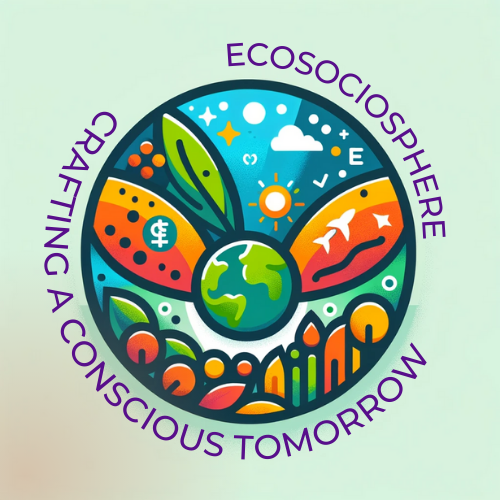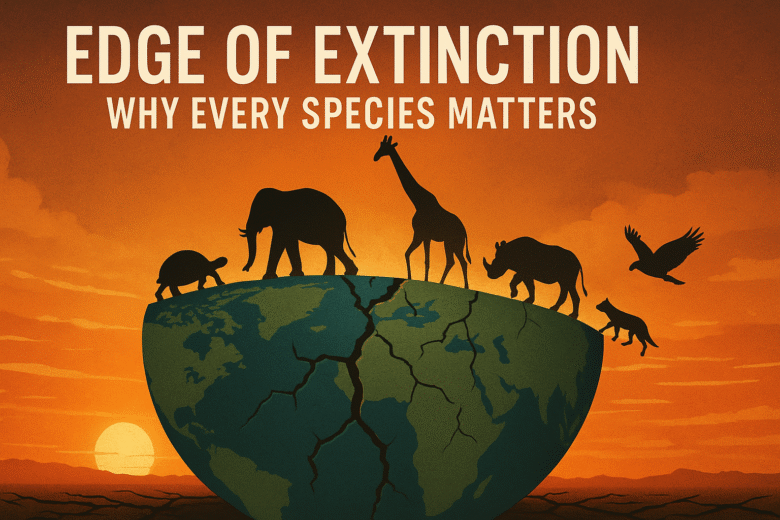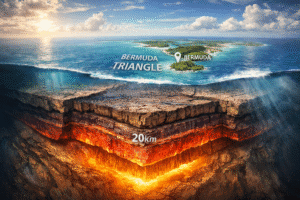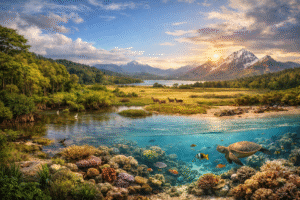Here’s a fun fact: scientists estimate that Earth is home to nearly 8.7 million species, but we’ve only identified about 1.2 million of them. That means most of the life sharing this planet with us remains unnamed, unstudied, and unnoticed. Yet many of these species are already disappearing before we even know they exist.
When I say “Edge of Extinction: Why Every Species Matters,” I’m not offering a sentimental plea for cute pandas or majestic tigers. I’m talking about the entire orchestra of life—beetles, mosses, frogs, fungi, plankton—that keeps the Earth functioning. Each extinction is not just the loss of a creature but a tear in the fabric of ecosystems that we all depend on. And right now, that fabric is fraying at an alarming pace.
Why Extinction Matters Beyond Just Numbers
Extinction isn’t just about the finality of a species disappearing. It’s about what disappears with it:
Ecosystem balance: Species form intricate relationships. Remove one link, and the entire chains collapse. Think of pollinators vanishing—our fruits, vegetables, and nuts follow.
Food security: Crops, fisheries, and livestock all depend on healthy ecosystems. The collapse of Atlantic cod in the 1990s wasn’t just about fish—it was about lost jobs, hunger, and economic collapse.
Medicinal treasures: Many medicines come from plants and animals. The rosy periwinkle from Madagascar gave us powerful cancer drugs. How many cures vanish with each rainforest tree we fell?
Cultural identity: From elephants in Indian folklore to salmon in Indigenous American traditions, species are woven into human culture. Extinction erases stories, rituals, and memory.
Case Study 1: The Passenger Pigeon – A Lesson in Arrogance
Once the most abundant bird in North America, passenger pigeons flew in flocks so massive they darkened the skies for hours. Yet by 1914, they were gone—hunted, overexploited, and ignored until it was too late. Their extinction reminds us that abundance today is no guarantee of survival tomorrow.
Case Study 2: India’s Vultures – The Silent Scavengers
In the 1990s, India’s vulture population collapsed by over 95% due to diclofenac, a veterinary drug. With vultures gone, carcasses rotted in fields, feral dog populations exploded, and rabies cases among humans surged. This is what happens when an “inconvenient” species disappears—it takes public health and safety down with it.
Case Study 3: The Bees – The Pollination Crisis
We like to think of bees only for honey, but their true gift is pollination. About 75% of flowering plants and 35% of food crops depend on animal pollinators. Declining bee populations mean declining yields of apples, almonds, and even spices like cardamom. Extinction here directly threatens dinner plates.
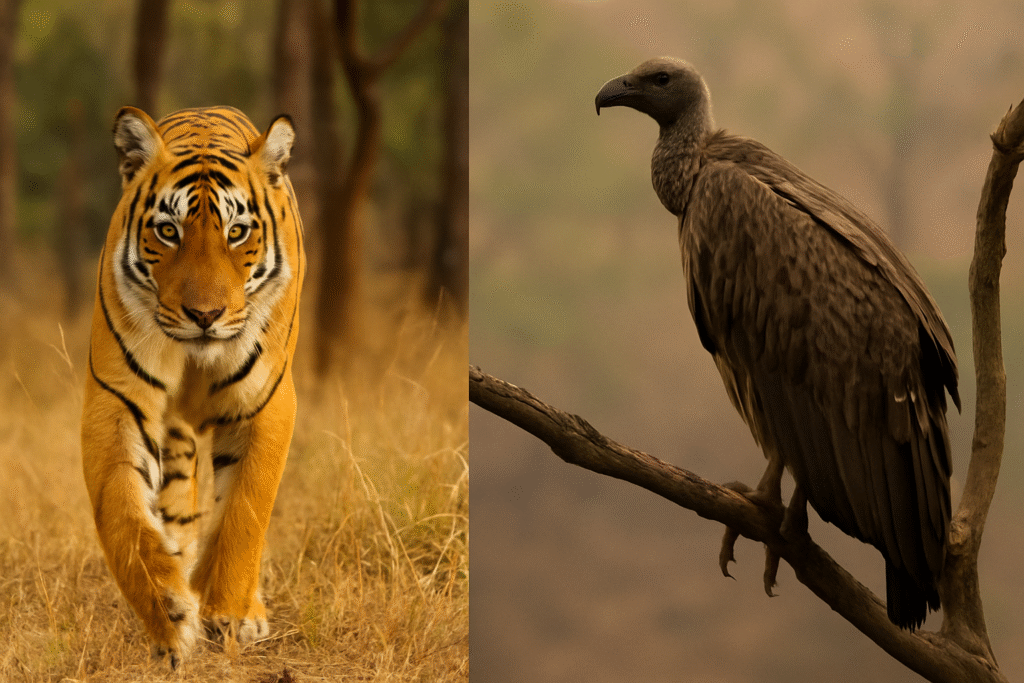
Why Every Species, Even the “Ugly Ones,” Matters
It’s easy to rally for the tiger or whale. But what about frogs, worms, or fungi?
Frogs eat pests and serve as bioindicators of water health.
Earthworms aerate soil and recycle nutrients.
Fungi decompose waste and form symbiotic relationships with plants.
Every species is a cog in the machine. Remove one, and you risk the entire system grinding to a halt.
The Sixth Mass Extinction: Man-Made and Accelerating
Earth has seen five mass extinctions before—dinosaurs disappeared 65 million years ago. But this time, the culprit is us. Scientists say the current rate of extinction is up to 1,000 times higher than the natural background rate. Deforestation, overfishing, climate change, plastic pollution, poaching—all roads lead back to human activity.
The Domino Effect – Why One Extinction Leads to Another
Extinction rarely happens in isolation. Remove a predator, and prey populations explode, collapsing vegetation. Remove a prey species, and predators starve. This ripple effect means losing one species may doom many others, creating what ecologists call “co-extinction.”
Example: Coral reefs are home to 25% of marine species. Kill the coral (through bleaching and warming seas), and you doom thousands of fish, crustaceans, and algae species in one blow.
The Ethical Question: Do We Have the Right to Decide?
Here’s the provocation: we often act as though only useful species deserve saving. Cute ones get conservation funding, ugly ones get ignored. But do we really have the moral right to wipe out creatures simply because they don’t benefit us directly? Is survival on Earth a privilege reserved only for the species we like?
Can Technology Save Us?
Some scientists argue that cloning or “de-extinction” might bring species like mammoths or passenger pigeons back. But let’s be clear: technology is no substitute for ecosystems. A cloned mammoth won’t bring back the Ice Age tundra. A resurrected pigeon won’t restore vanished forests. The only real solution is prevention, not posthumous tinkering.
What We Can Do Now
Protect habitats: Stop deforestation, safeguard wetlands, protect coral reefs.
Change consumption: Reduce demand for ivory, exotic pets, or shark fin soup.
Push policies: Governments must enforce bans on harmful pesticides, regulate poaching, and incentivize conservation farming.
Support local communities: Conservation only works when locals benefit—eco-tourism, sustainable harvests, and traditional stewardship are key.
Act personally: Plant native species, avoid single-use plastics, and support conservation groups. Small acts multiply.
Conclusion
We live in a moment of extraordinary responsibility. Never before has one species—ours—held such power over the fate of millions of others. Edge of Extinction: Why Every Species Matters is not just a slogan—it’s a reality check. Every species is a thread in the web of life, and when too many threads snap, the web collapses.
Extinction isn’t just their loss—it’s ours too. The question is: will we keep cutting the threads, or will we finally learn to weave life back together?
Author’s Note
Writing this piece, I kept returning to one thought: extinction is permanent. Once a species is gone, no amount of money, technology, or guilt can bring it back. Saving them now is not charity—it’s self-preservation.
G.C., Ecosociosphere contributor.
References and Further Reading
- United Nations Report on Biodiversity Loss
- World Wide Fund for Nature (WWF) Living Planet Report
- International Union for Conservation of Nature (IUCN) Red List
- National Geographic Feature on Mass Extinctions
- Convention on Biological Diversity (CBD) Targets
- Our World in Data: Biodiversity and Extinction
- What Percent Of Our Food Is Pollinated By Bees?
